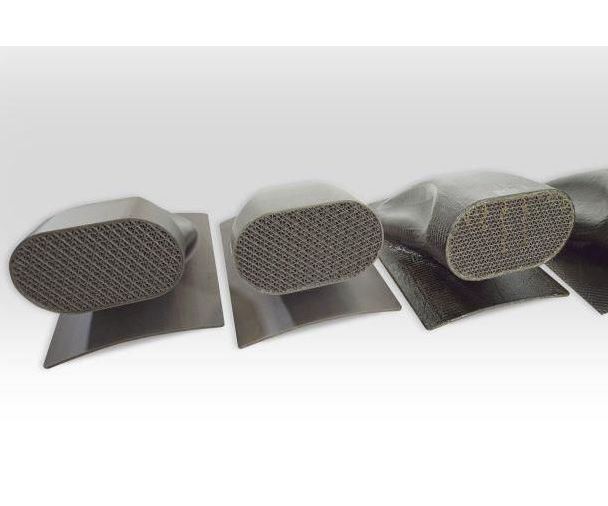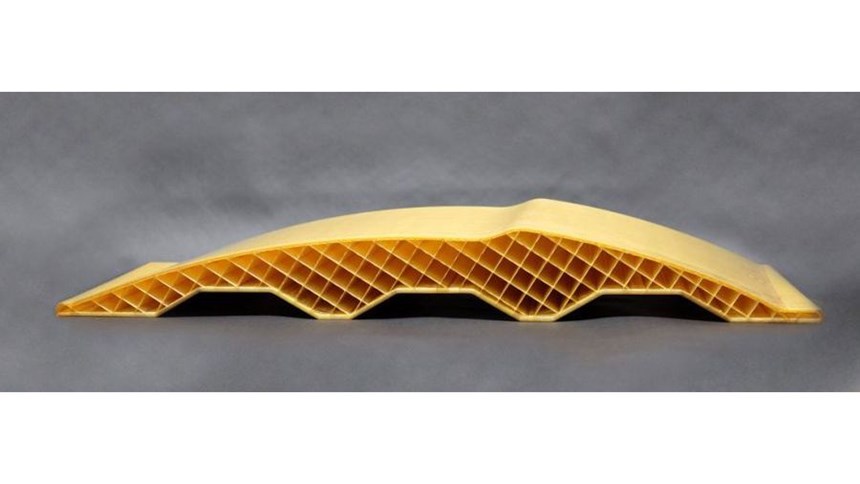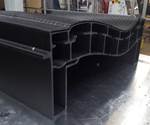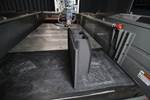Using 3D Printing for Composite Molds and Tools: The Trend Continues
3D printing is becoming more common in the aerospace tooling realm. Production tooling can be made quickly and on-demand, which helps the tooling industry keep pace with accelerating composite part design cycles and demand for faster overall part processing speeds.
About a year ago I wrote an article in CW magazine about how 3D printing is becoming more common in the aerospace tooling realm. Fixtures, prototyping tools and even production tooling can be made quickly and on-demand, which helps the tooling industry keep pace with accelerating composite part design cycles and demand for faster overall part processing speeds. CW is seeing many examples of this. (For one, see this blog post by Jeff Sloan about Oak Ridge National Laboratory [ORNL] and its progress in this area.)
Stratasys shared solid evidence of this tooling trend during Rapid and SAMPE Long Beach earlier this year. Tim Schniepp, who is the Composites Tooling director at Stratasys, shared some insight with me regarding projects his company is involved with. The first is a 3D-printed sacrificial or trapped tooling solution. Using a new material that the company calls ST-130 together with a patent-pending “alternative fill” printing pattern, the trapped, washout tooling is designed for rapid build speed, fast dissolution, and high quality that can be autoclaved. The material and process were used to create a tool for Swift Engineering that allowed production of a complex hollow engine inlet duct (see the first photo above). The president of Swift Engineering, Rick Heise, says “Stratasys-produced composite tools allow us to develop products much faster without compromising quality or performance of the parts.”
Secondly, Stratasys has launched a comprehensive design guide, entitled “Design Guide for FDM Composite Tooling,” that lays out the best practices for design, fabrication and preparation of 3D printed composite tools that can be used to cure composites at temperatures exceeding 350°F and pressures of 100 psig, says Schniepp, when Ultem1010 resin material (supplied by SABIC, Pittsfield, Massachussetts) is used for the build (FDM is fused deposition modeling). Stratasys 3D-printed composite tooling using Ultem1010 enables manufacturers to produce high temperature (greater than 350°F), autoclave-cured composite structures in a fraction of the of time that traditional metal tools require, while also providing significant cost savings. Schniepp presented a technical paper at SAMPE regarding the design guide, entitled “Design Guide Development for Additive Manufacturing of Composite Tooling."
“We developed the Design Guide to provide our customers with the ability to immediately realize the immense time and cost-saving benefits of FDM composite tooling without the effort and expense required to develop the knowledge independently,” says Schniepp.
To further assist customers, Schniepp says that Stratasys now offers an Acceleration Kit for its Fortus 900 printing machines, aimed at producing large tools. A larger extrusion tip and upgraded software package allows faster material laydown rate for faster builds. The acceleration kit is intended for Ultem1010 and ASA polymer materials.
This article originally appeared on CompositesWorld.com
Related Content
-
Video: 5" Diameter Navy Artillery Rounds Made Through Robot Directed Energy Deposition (DED) Instead of Forging
Big Metal Additive conceives additive manufacturing production factory making hundreds of Navy projectile housings per day.
-
Beehive Industries Is Going Big on Small-Scale Engines Made Through Additive Manufacturing
Backed by decades of experience in both aviation and additive, the company is now laser-focused on a single goal: developing, proving and scaling production of engines providing 5,000 lbs of thrust or less.
-
ActivArmor Casts and Splints Are Shifting to Point-of-Care 3D Printing
ActivArmor offers individualized, 3D printed casts and splints for various diagnoses. The company is in the process of shifting to point-of-care printing and aims to promote positive healing outcomes and improved hygienics with customized support devices.

















